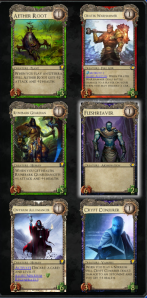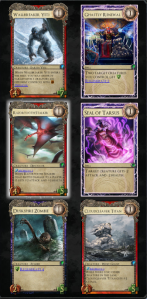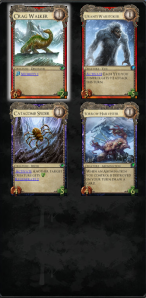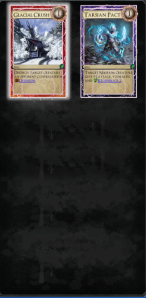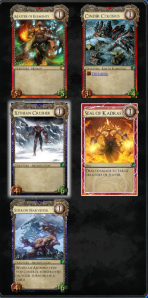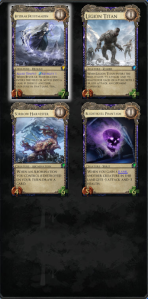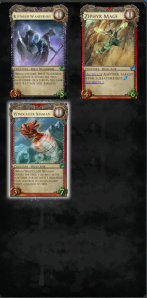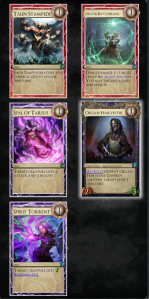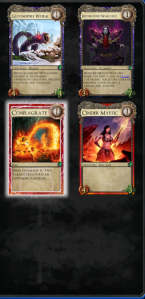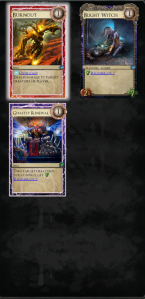Due to some changes in my life and the general problem of being creative is that sometimes you’re not, I’ve had to take a step back from this. Now that things are falling into order, that should be less of a problem.
Over the past few months I’ve read the Hunger Games trilogy, and watched the movies. At the same time, season two of Marvel’s Daredevil has sat in my Netflix queue, unfinished. There’s a lot of difference between these two: medium, setting, writing style, the list goes on. What isn’t so different is that the world is a horrible place, but how the protagonists ultimately respond to that horror is markedly different. Katniss Everdeen and Matt Murdock have been hit by the world, over and over and over again, becoming hardened in the process. But what ultimately makes them different, what speaks volumes of difference between these two pieces of media, is how kind they are. It’s this kindness, and the radicalness of it, that makes Hunger Games a compelling book and the lack thereof that makes Daredevil dull. Let’s not waste anytime and jump into what I mean.
Spoilers for both franchises. Trigger warning: Torture, starvation, death
First, let’s consider each character’s situation. Katniss lives in District 12, where starvation is a constant threat, the Capitol carries out the execution of two people she knows every year, on TV, with the Hunger Games and she’s had to care for family for the past four years. Matt Murdock lost his vision to magical chemicals, his father to the Irish mob, has become a lawyer helping the weak and carries out vigilante justice as the man in the mask/Daredevil. Both characters have varying degrees of support networks and are forced into extraordinary situations where violence is required. Their situations are hard and they’ve been calloused by the world.
Katniss doesn’t see herself as a kind person, or even a particularly good person. She’s a survivor, pragmatic with her own sense of fairness. And the thing is, she’s not. While the books may be told in first person and Katniss has a somewhat lopsided view of herself, no one decent ever wins the Games. The world is horrid and oppressive and everything about it calls out for you to be callous in order to survive, but characters defy that, displaying acts of kindness. Peeta giving Katniss the bread when she’s on the brink of death, the alliance between Katniss and Rue,Katniss comforting Rue as she dies and giving her something approaching a proper burial, her refusal to kill Peeta at the end of the games. It only continues in the sequels: their generosity towards Rue and Thresh’s family, defying orders in Districts 8 and 2, and finally her forgiveness and refusal to kill Peeta in the Capitol. Kindness is radical, and it works. These actions matter not because they are kind in and of themselves, they are in defiance of the world as it is.
Compare this to Matt Murdock, who has a lot fewer existential problems and a better support network. He is, by and large, in control of his environment and actions, the action and counteraction of his world is much more of his volition than it is for Katniss. He cleans up the streets of New York, fighting Wilson Fisk and eternal clans of shadowy cabals of ninjas, and he takes refuge in the fact that he doesn’t kill people. Torture people? No problem. Graphic displays of violence, sometimes for little more than the kick of it? Sure. Killing is what makes him different than the Punisher, who is a bad man. But accepting killing as a moral limit while still engaging in other shadowy behavior just makes you Christian Bale Batman. It’s not terribly convincing and it’s a hard line to swallow in a show as graphic as Daredevil*. Harder still when the show abandons the Matt Murdock plot, as he turns himself into an isolated soldier to fight a vague cabal of eternal ninjas set on world domination. It revels in its darkness, not interested in the light.
This all matters because the real world is harsh and cruel. Seeing that so blandly reflected in the stories we tell isn’t interesting, or meaningful. Kindness, actual radical kindness, with consequences; not the sort of silencing message that the privileged use to hush the oppressed is important. The stories we tell ourselves reflect back on us and shape the next stories that we tell ourselves. The stories we tell ourselves shape how we interact with the world as it is and make of us think of the world that could be. Till next time.
*contrast this to something like Leverage where Elliot’s nonlethal take down of guards and the like is still dangerous. It’s easier to accept the show’s line when you see nothing worse than cuts and bruises.
